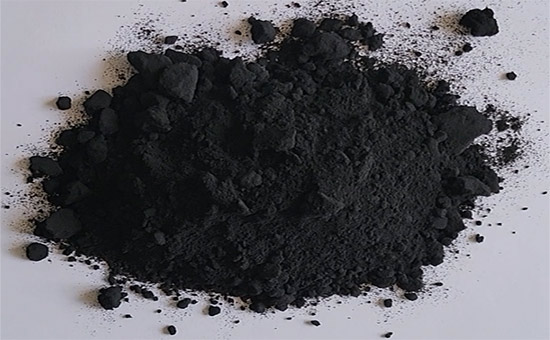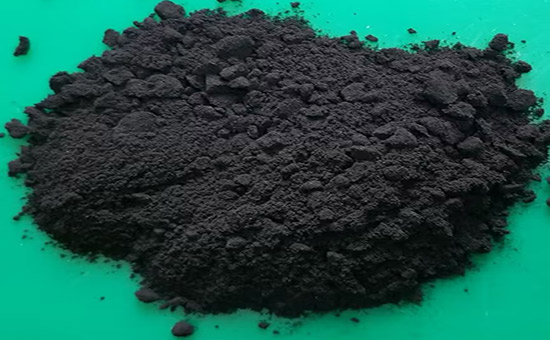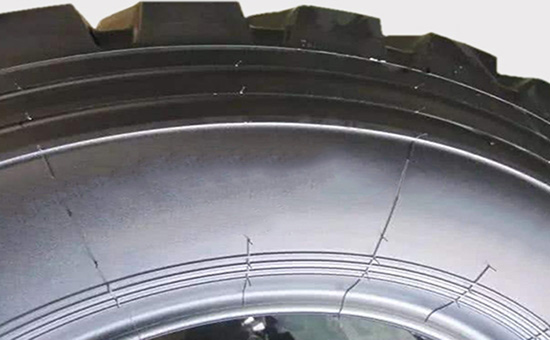Rubber powder is an elastic powder material after waste rubber products are mechanically crushed, which can be re-added to rubber products to reduce production costs, improve the processing performance of rubber materials, and improve the fatigue resistance of rubber products. In actual production, the physical and mechanical properties of vulcanized rubber mixed with rubber will change to a certain extent, and rubber product manufacturers can reasonably determine the mixing ratio of rubber powder according to these changes and their own specific performance needs, so as to effectively reduce costs under the premise of ensuring rubber products.
1. Effect of mixed rubber powder on the elasticity of vulcanized rubber
The elastic change of vulcanized rubber after mixing rubber powder in pure rubber is the deformation of its molecular chain, which is affected by the confinement effect of rubber powder. Generally, the elasticity of rubber powder is larger than that of rubber matrix, and the elasticity of vulcanized rubber increases with the increase of the amount of rubber powder; If the elasticity of the rubber matrix is greater than that of the rubber powder, the vulcanized rubber will be less elastic.

2. Effect of blending rubber powder on the tensile characteristics of vulcanized rubber
The tensile strength of vulcanized rubber after the addition of rubber powder in pure rubber is related to rubber varieties. In general, the mixing of rubber powder with rubber powder in stretched crystalline rubber, such as natural rubber, will hinder the crystallization orientation of rubber molecular chains, resulting in the reduction of tensile strength and elongation. The tensile strength and elongation at break of non-tensile crystalline rubber, such as styrene-butadiene rubber, were improved under the constraint of rubber powder 2SLYY1129. In actual production, the use of carbon black and other reinforcement can improve the elasticity and tensile strength to a certain extent, with the increase of the amount of rubber powder, the tensile strength and elongation of vulcanized rubber will be reduced.
3. The effect of blending rubber powder on the wear characteristics of vulcanized rubber

Abrasion characteristics are a key measure of rubber wear resistance. After pure rubber is mixed with rubber powder, the abrasion of vulcanized rubber increases with the increase of rubber powder. This should be noted when mixing rubber compounds in rubber products that require low abrasion properties.
4. The effect of blending rubber powder on the ozone cracking of vulcanized rubber
Ozone cracking characteristics are an important indicator to measure the aging resistance of rubber. The addition of rubber powder in pure rubber will increase the surface concave and convex increase of vulcanized rubber during elongation and deformation, thereby accelerating the process of ozone cracking. With the increase of the amount of rubber powder, the ultimate elongation decreases.
5. The effect of mixed rubber powder on the fatigue damage of vulcanized rubber
The fatigue damage life of vulcanized rubber mixed with rubber powder is shortened with the increase of the amount of rubber powder. When mixing rubber powder in rubber products under dynamic load, it is necessary to pay attention to the influence of rubber powder on the fatigue failure characteristics of rubber vulcanized rubber.
6. Effect of blending rubber powder on the heat generation characteristics of vulcanized rubber

After the rubber powder is mixed with the pure glue, when the vulcanized rubber is subjected to repeated large strains, in addition to the internal loss, the interface among the rubber powder and the rubber molecular chain will be damaged, resulting in friction and heat generation on the interface. Therefore, the fatigue heat generation of vulcanized rubber will increase with the increase of the amount of rubber powder.
7. Effect of blending rubber powder on the loss characteristics of vulcanized rubber
The loss value of rubber vulcanized rubber mixed with rubber powder generally increases with the increase of the amount of rubber powder.
8. Effect of mixed rubber powder on the tear resistance of vulcanized rubber

The appropriate amount of rubber compound for non-stretch crystalline rubber can improve the tear resistance of vulcanized rubber; Excessive use of rubber powder will reduce the tearing performance of vulcanized rubber; This is the result of the detachment energy at the interface of the rubber powder and the antagonistic energy of the interaction, displacement, and rotation of the rubber powder particles.
9. Effect of blending rubber powder on the tear resistance of vulcanized rubber
The right amount of rubber powder can improve the cracking resistance of rubber, but too much can significantly reduce this performance.
Rubber product manufacturers fully understand the influence of rubber powder on the physical and mechanical properties of pure rubber and vulcanized rubber filled with carbon black, and can better use rubber powder to reduce the cost of products. In actual production, the particle size and surface properties of rubber powder will also affect the physical properties of rubber products.
Exclusive original article [commercial authorization] reprint, excerpt and excerpt in any form are prohibited without written authorization. Focus on Hongyun rubber: learn the process formula and raw material technology of producing rubber products from recycled rubber to help you reduce costs and increase profits